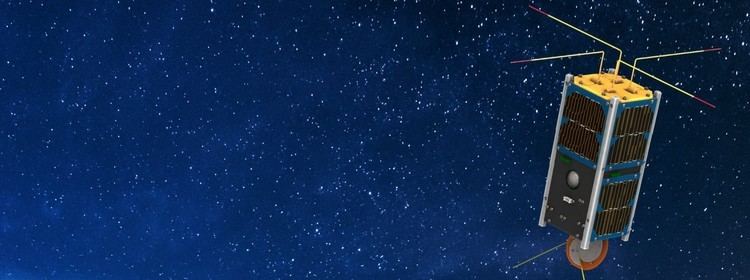Launch mass TBA Regime Low Earth orbit | Mission duration TBA Launch date March 19th 2017 Reference system Geocentric orbit | |
 | ||
Mission type Thermosphere research, part of the QB50 mission Operator University of Patras, Libre Space Foundation Manufacturers University of Patras, Libre Space Foundation Similar ANUSAT, Cygnus, CST‑100 Starliner | ||
UPSat is the first satellite manufactured in Greece, by the University of Patras and Libre Space Foundation part of the QB50 mission with ID GR-02. UPSat mission aspires to be the first completely open source satellite ever launched in orbit both software and hardware wise.
Contents
Open Source
The UPSat mission, aims to develop an open source hardware and software 2U cubesat, minimizing the use of commercial of the shelf components to minimum, and providing hardware and software designs under the provisions of the CERN-OHLv2 and GNU-GPLv3 licenses respectfully. The vast majority of its components are designed from scratch in an open source software and hardware way.
Mission
UPSat as part of the QB50 cubesat constellation will be launched to the International Space Station in mid 2016 and will be launched via NanoRacks CubeSat Deployer on board. Data will be retrieved via the SatNOGS network of ground stations, an open source initiative of Libre Space Foundation all data and telemetry will be publicly available.
General
EPS (Electrical Power System) An EPS designed from scratch around an STM32L1 MCU, utilizing software MPPT, harnessing power from 7 solar panels and having a 3-cell battery system.
OBC (On board Computer) An OBC designed from scratch around an STM32F4 MCU, with software built around FreeRTOS Operating System
ADCS (Attitude Determination and Control System) An ADCS designed from scratch around an STM32F4 MCU, determining attitude and position through sensor fusion (GPS, magnetometer, accelerometer, gyro, sun sensor) and controlling through magneto-torquers and a spin torquer.
SU (Science Unit) (see primary payload)
COMM (Communications system) A COMM designed from scratch around an STM32F4 MCU, using the TI CC1120 transceivers, with contingency around TX operations combined with a custom Antenna deployment system with integrated GPS antenna.
IAC (Image Acquisition Component) (see secondary payload)
Structure The structural sub-system is based on a “hybrid” approach of both Aluminum (frame) and CFRP components (4 faces), built in-house.
Primary Payload
Onboard UPSat, the primary payload, a science unit is integrated. The science unit (designed by the University of Oslo and supplied through the Von Karman Institute as part of the QB50 program) will be used for plasma measurements during the mission duration. The since unit is a multi-Needle Langmuir Probe instrument works by measuring the current collected individually from four needle probes, placed in front of the satellite’s shock front. The collected current is converted to voltage, filtered, digitalized and then sent to the central telemetry system.
Secondary Payload
As a secondary payload UPSat sports an embedded Linux board (DART-4460) running a modified version of the OpenWRT operating system controlling a b/w camera (MU9PM-MH) with 1 / 2.5’’ sensor size.
